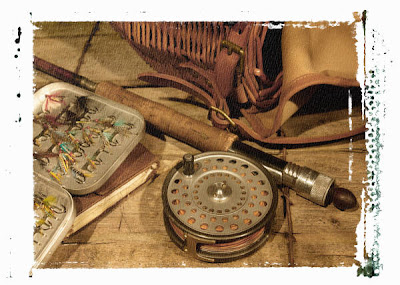Fly Fishing Equipment - Choosing Fly Rods
Basic fly fishing equipment consists of three items, fishing rod, reel and fly line. The most important piece of your fly fishing equipment to select is the fly rod. There are many different fish species to target and many different types of water to fish, each having their own set of criteria to meet. This can range in species such as trout, bass, tarpon, salmon large sea fish and even marlin.
Fishing conditions range from small streams, ponds and dams, lakes, large rivers, back-country trout to the open sea. Many serious fly fishermen or women will have up to six or more rods in their collection. However as complicated as it may seem you can narrow down your choice of rod to one or two depending on what type of fishing you intend doing.
Fly fishing can be a precise sport that usually requires the fly to be presented to a fish with accurate casting, for this reason the fly rod requires qualities that can preform the way the fisher intends. The rod needs to not only present a fly in a way that imitates its prey but also handle the impending battle, especially large fish in heavy flowing waters.
Choosing Your Fly Rod.
Long gone are the days of bamboo rods and to a certain extent fiber-glass rods. Technology advances now gives us access to an abundance of choices with the main type of rod construction being graphite. These rods offer power, accuracy and the strength to land big fish in all fishing situations.
Determine Your Fish Type.
Most people know what fish species they need their fly fishing equipment for, most popular are bass and trout, a large mouth bass behaves differently in its pursuit of its prey than does a rainbow trout. They also fight differently and are found in different environments.
Determine Your Waterways.
As a general rule the type of water you fish will dictate the type of rod you choose. Fly fishing equipment comes in different "weights" from 1 through to 12. Where low weight numbers such as a 4 are for light delicate casts that you would use in a small stream or pond, and heavy weights such as a 9 or 10 would be used in large fast moving rivers. The lighter weights require more skill as you are aiming for precise, gentle, shorter casts, usually to fish that are visible and feeding, and using very light lines, tippets and flies. The heavy weight rods are also used to target visible feeding fish but also fishing blind in lakes and rivers. The larger weight fly fishing gear gives long casts and allows the use of large fishing flies.
Another consideration in choosing fly fishing rods is the action of the rod or flex, full flex rods are sensitive and gives a better feel for the fish, but are short on casting distance, a stiffer rod will allow longer distance casts but will sacrifice the sensitivity. In situations of heavy wind, fast flowing rivers and sea fishing a fast action stiff fly rod is your best bet.
Although these two extremes of 4 weight and 9 weight require two complete sets of fly fishing equipment, there is a middle ground that can cover most fly fishing situations. Using a weight 7 rod, reel and line will enable you to fish smaller streams, lakes and medium size rivers, this is a very versatile weight and in a medium action ideal for beginners and experienced fishermen alike. small four to six piece rods in a 6-7 weight is an ideal setup for the traveling fisherman.
Fly Fishing Equipment - Choosing Fly Rods
skip to main |
skip to sidebar
Fishing Art
Fly-fishing art and galleries by the top artists from the world's most authoritative fly-fishing source.























